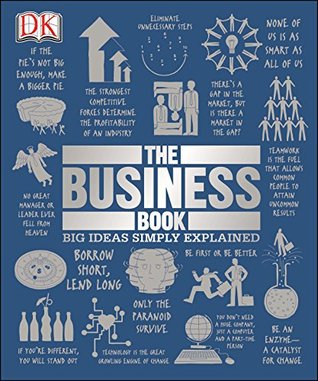More on this book
Community
Kindle Notes & Highlights
by
Sam Atkinson
Read between
September 17 - September 26, 2020
The CMM describes five levels of increasing maturity through which an organization or team manages its processes:
“chaos brings uneasiness, but it also allows for creativity and growth.”
Creativity and growth are enabled because employees have a higher level of responsibility and accountability for their work, as well as a bigger investment in the outcome.
“A brand is the set of expectations, memories, stories, and relationships that, taken together, account for a consumer’s decision to choose one product or service over another.
"Don’t find customers for your products, find products for your customers."
The distribution system, which determines how products and services get to potential buyers, is also a vital aspect to consider.
The first three steps lie in creating attention (A), developing interest (I), and building desire (D) for the product, before the fourth step—the “call to action” (A)—tells them exactly how and where to buy.
"The entire corporation must be viewed as a customer-creating and customer-satisfying organism."
"Marketing is not the art of finding clever ways to dispose of what you make. It is the art of creating genuine customer value."
The term “cash cow” refers to an investment or area of business that provides a dependable source of revenue.
"Products are made in the factory, but brands are created in the mind."
“people want to use services from companies that believe in something beyond simply maximizing profits.”
"The only thing we know about the future is that it will be different."
They must make decisions about aspects of the product (such as its type), its place of distribution, price, and promotion.
Ps: Product, Place, Price, Promotion.
branding, packaging, warranties, and anything else related to the product offering.
companies can succeed or fail depending on their ability to deliver the right goods at the right price, at the right time, via the right distribution channels.
kaizen—meaning
customer feedback is valued in the product-development process.
companies could increase sales by creating in consumers the “desire to own something a little better, a little sooner than necessary.”
Finally, businesses can improve processes and sales by observing the best practice of competitors in their field, using a process known as benchmarking,
The challenge for entrepreneurs is to offer outstanding value for money, while also keeping costs low enough to trade profitably.
value analysis
In some cases, simplifying a process can mean using different materials.
"Simple can be harder than complex: you have to work harder to get your thinking clean."
"Before you say you can’t do something, try it." Sakichi
its principles of “customer first” and “quality first,” helped the company thrive,
Kaizen is more likely to be effective if workers are asked to work as teams, rather than as isolated individuals.
product of the synergy
“five Ws,” which are the five questions: Why, When, Where, Who, and What.
it follows that workers should enjoy taking part in kaizen improvements and, consequently, financial bonuses should not be necessary.
"A company will get nowhere if all the thinking is left to management."
“The most important mission for a Japanese manager is to develop a healthy relationship with his employees, to create a familylike feeling within the corporation, a feeling that employees and managers share the same fate.”
"Excellent companies don’t believe in excellence—only in constant improvement and constant change."
Employee motivation improved, which increased productivity.
Business Process Reengineering (BPR).
use R&D to achieve evolutionary, rather than revolutionary, product development.
Open innovation is based on the idea that companies should be less private with their product-development programs, reflecting the view that its customers can make valuable contributions to the product-development process.
"It is a capital mistake to theorize before one has data."
AGILE SOFTWARE DEVELOPMENT (ASD)
Long tail A term coined by UK writer and entrepreneur Chris Anderson to describe how the overall sales of niche products at the thin “tail” of a demand curve may be greater than sales of the most popular products at the “head.”


